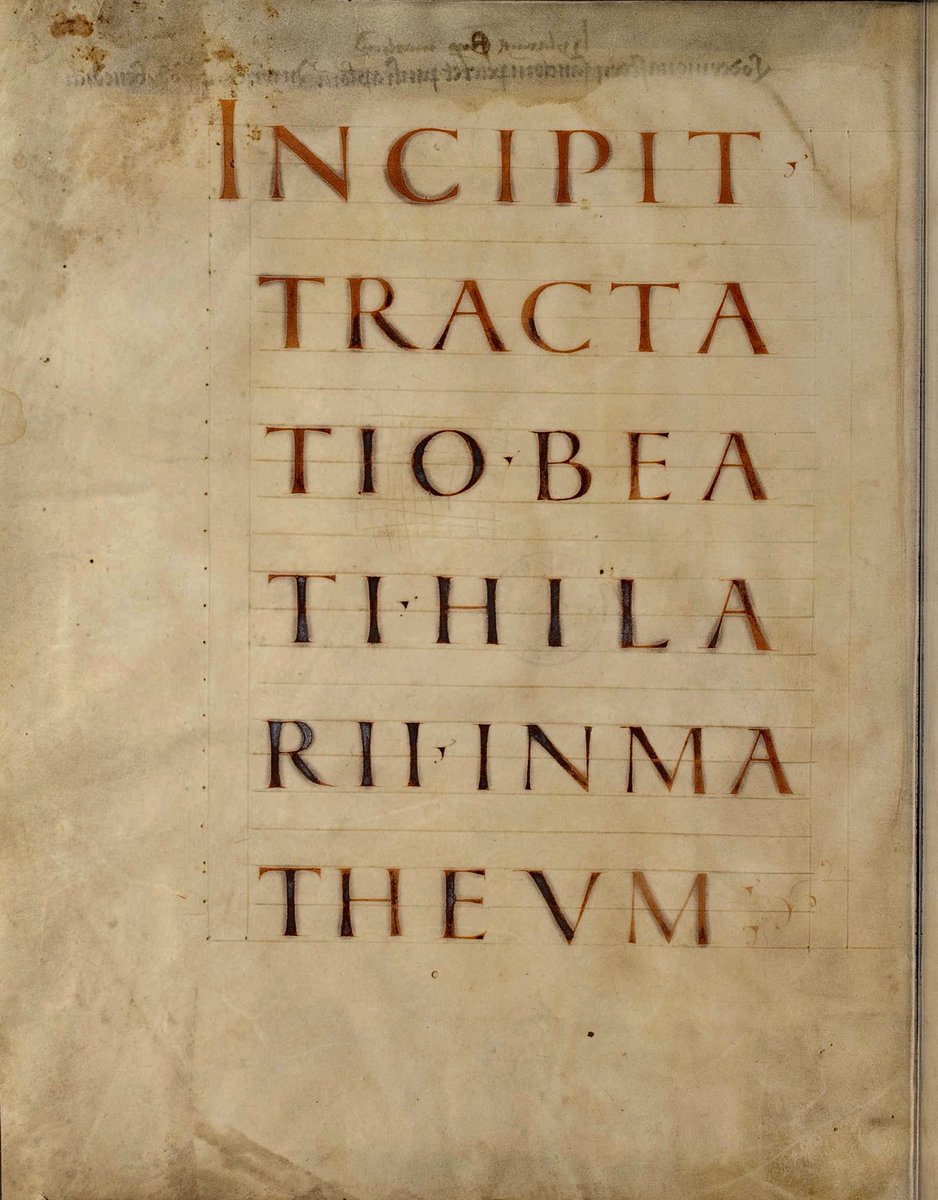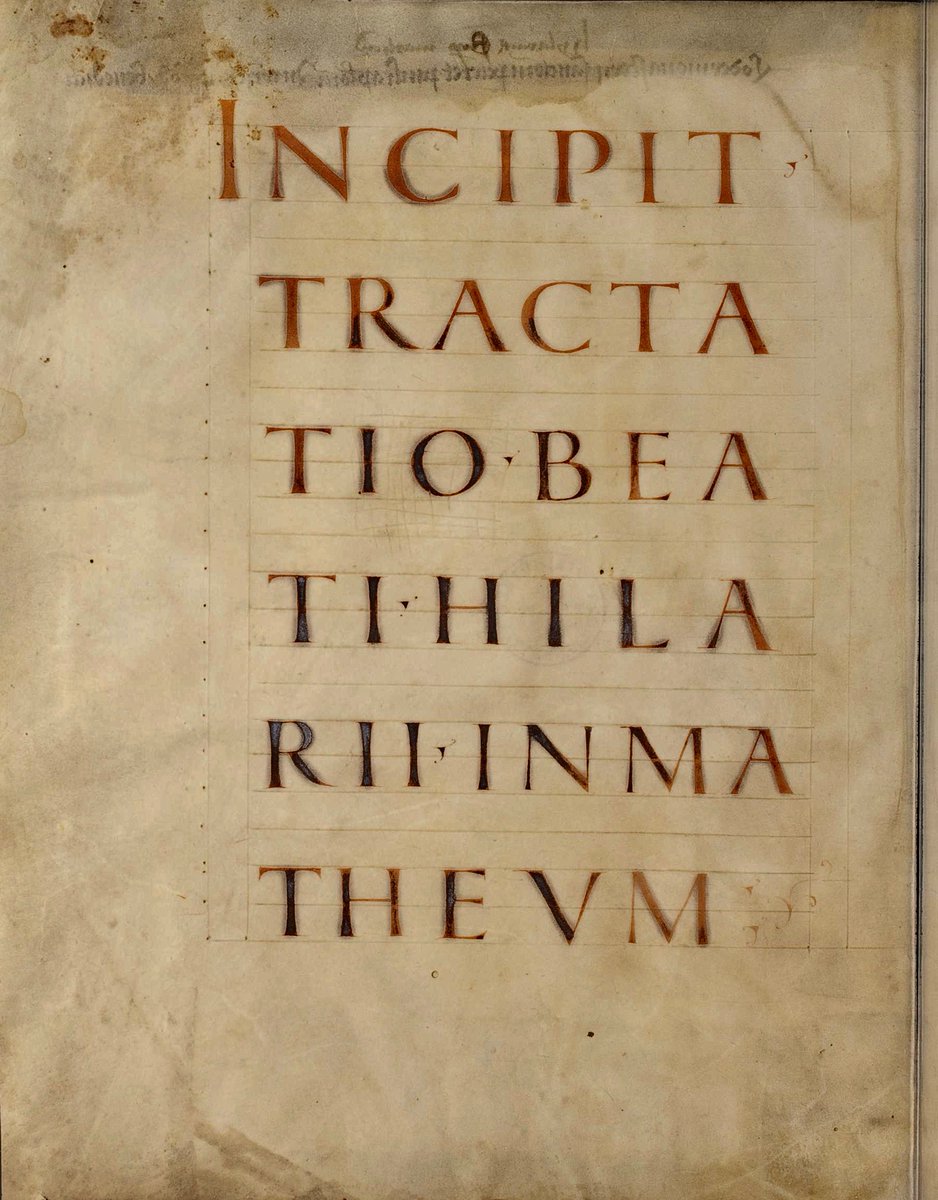In the Early Middle Ages only the clergy could read and write, right? And if there were some lay people that could they were only men, right? It& #39;s impossible that there might be some document showing that women and lay people read and borrowed books, right?  https://abs.twimg.com/emoji/v2/... draggable="false" alt="🧵" title="Thread" aria-label="Emoji: Thread">1/ #medievaltwitter
https://abs.twimg.com/emoji/v2/... draggable="false" alt="🧵" title="Thread" aria-label="Emoji: Thread">1/ #medievaltwitter
It& #39;s the end of the 9th century and the monks at Wissembourg abbey (today in Alsace, France) start to keep track who borrowed books from them. They do it on the last folios of a beautiful copy of Hilary of Poitiers& #39; commentary on Matthew& #39;s Gospel, now HAB Cod. Guelf. 35 Weiss. 2/
I& #39;m just going to pause here for a second, because we all need to appreciate the typographic perfection of this title page of Cod. Guelf. 35 Weiss. #medieval #manuscripts 3/
Back to the topic at hand. So the monks keep a lending list to know who has what. A lot of the people there are local priests like Geilo, who got also a book on grammar. In the absence of Duolingo, probably the best way to torture yourself with language learning... 4/
It& #39;s a living list. You see how when someone returned a book their name and the books borrowed were scratched out? Way easier to notice if we invert the colours. Lantfrid here had an antiphonary but was a good patron and gave it back! 5/

 Read on Twitter
Read on Twitter 1/ #medievaltwitter" title="In the Early Middle Ages only the clergy could read and write, right? And if there were some lay people that could they were only men, right? It& #39;s impossible that there might be some document showing that women and lay people read and borrowed books, right? https://abs.twimg.com/emoji/v2/... draggable="false" alt="🧵" title="Thread" aria-label="Emoji: Thread">1/ #medievaltwitter" class="img-responsive" style="max-width:100%;"/>
1/ #medievaltwitter" title="In the Early Middle Ages only the clergy could read and write, right? And if there were some lay people that could they were only men, right? It& #39;s impossible that there might be some document showing that women and lay people read and borrowed books, right? https://abs.twimg.com/emoji/v2/... draggable="false" alt="🧵" title="Thread" aria-label="Emoji: Thread">1/ #medievaltwitter" class="img-responsive" style="max-width:100%;"/>







